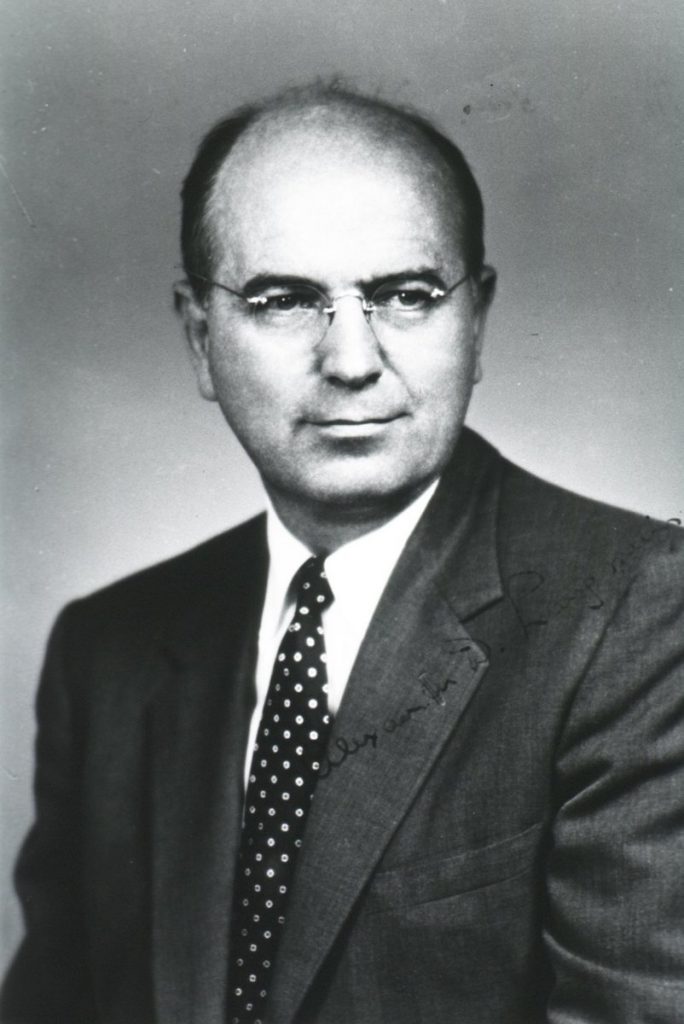Menu
 ..when Alexander Duncan Langmuir was born in Santa Monica, California. He spent his youth in New Jersey. His uncle, Irving Langmuir won the Nobel Prize in Chemistry in 1932. At Harvard College, Alex Langmuir received his AB (cum laude) in 1931 and his MD in 1935 from Cornell University Medical College.[3]
..when Alexander Duncan Langmuir was born in Santa Monica, California. He spent his youth in New Jersey. His uncle, Irving Langmuir won the Nobel Prize in Chemistry in 1932. At Harvard College, Alex Langmuir received his AB (cum laude) in 1931 and his MD in 1935 from Cornell University Medical College.[3]
From 1942 to 1946, he served as an epidemiologist with the Armed Forces Epidemiologic Board’s Commission on Acute Respiratory Diseases, stimulating his lifelong interest in influenza. In 1946, Langmuir returned to Johns Hopkins University as an associate professor of epidemiology. By 1949 he was attracted to the challenge of becoming the first chief epidemiologist of the newly established Communicable Disease Center (now the Centers for Disease Control and Prevention [CDC]) in Atlanta, Georgia, a position he held for over 20 years.[3]
He wrote extensively on all phases of epidemiology on a global basis and was recognized internationally as a leading contributor in epidemiology. Langmuir was a visiting professor at the Johns Hopkins School of Hygiene and Public Health from 1988 until his death in 1993.[1]
In 1951, following the start of the Korean War, Langmuir established the EIS program as an early warning system against biologic warfare. EIS officers then and now are physicians, veterinarians, nurses, and health scientists who serve 2-year assignments. In an obituary written for the New York Times, Lawrence Altman said Langmuir “taught what he called ‘shoe leather epidemiology,’ stressing that investigators go into the field to collect their own data and view directly the locale of the public health problem they were investigating.” Langmuir said:
“Each epidemic aid call was an adventure and a training experience, even the false alarms.”
He stressed that field epidemiology should be taught in the field, not in the classroom. Admission into the EIS program was highly selective. Langmuir believed that when competent persons were thrust into challenging circumstances with supportive supervision, excellent results were certain. He regarded the EIS officers as members of his extended family, backing them firmly when they found themselves in difficulty and joining them for the roasts of CDC leaders during the officers’ annual skit night—often at his own expense.
In 1955, Langmuir and his young staff achieved early recognition due to the “Cutter Incident.” The new inactivated (Salk) polio vaccine was causing cases of polio. Surgeon General Leonard Scheele asked Langmuir to develop a surveillance system to determine the extent of the problem. Langmuir deployed his staff, and within days they determined that the cases were caused by vaccine from a single manufacturer: Cutter Laboratories.
“Langmuir was able to predict with great accuracy the expected size of the epidemic and the number of secondary cases that would occur,”
(William Foege, former CDC director).
The idea of effective national disease surveillance captured Alex Langmuir’s imagination throughout his career. He believed that surveillance is the foundation for evidence-based public health action. Langmuir preached the importance of the systematic collection of pertinent data, the consolidation and analysis of these data into useful information, and the dissemination of the results to all who need to know so that they can take action. His goal was to use surveillance systems to define populations at risk for disease, determine interventions, and monitor their impact. Langmuir and his staff developed novel national surveillance programs for an array of communicable diseases and for chronic diseases, injuries, and reproductive health. Indeed, he considered the population explosion to be the most serious epidemic of all. [3]
Altman described Langmuir as “a tall man who could command immediate attention when he stood to speak to audiences in his deep voice. He thrived on controversy and took pride in overcoming local political pressures to crusade for preventive medicine and other measures to safeguard public health.” Philip Brachman, who succeeded Langmuir as EIS director, described Langmuir as “visionary, clairvoyant, tenacious, well prepared, scientifically honest, and optimistic.” Langmuir enjoyed being a civil servant and working to benefit the public. “His concerns were to control and prevent disease by applying the principles of epidemiology to the identification of causes and solutions,” Brachman wrote. Foege described Langmuir as someone with a public health message who arrived at the right time and place in history to be able to broadly disseminate his message. [3]
In 1979, when Alex Langmuir was interviewed by D.A. Henderson about being recruited to work at CDC in 1949, Langmuir said,
“As I looked it over and saw the vision, there was no question, [former CDC director] Justin Andrews took me to the mountain and showed me the Promised Land.”
At CDC, Alex Langmuir changed the way epidemiology is used in public health practice, first in the United States and then throughout the world. In the 65 years since Langmuir’s arrival at CDC, his disciples—EIS and field epidemiology training program officers—have played pivotal roles in combating the root causes of major public health problems. In addition, EIS inspired Field Epidemiology Training Programmes (FETP) all around the world. At present, 69 FETP's worldwide train field epidemiologists after the example that Langmuir set. Millions of persons live longer and healthier lives because of the accomplishments of Langmuir and his progeny in controlling and preventing disease.
This is Alex Langmuir’s grand legacy. [3]